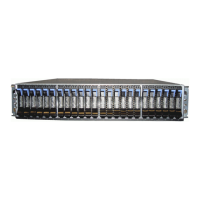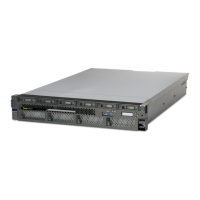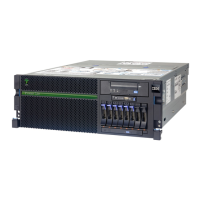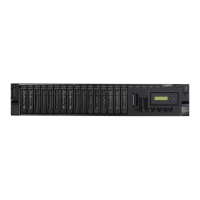4405ch02 Architecture and technical overview.fm Draft Document for Review May 28, 2009 1:59 pm
26 IBM Power 570 Technical Overview and Introduction
The POWER6 processor implements the 64-bit IBM Power Architecture® technology. Each
POWER6 chip incorporates two dual-threaded Simultaneous Multithreading processor cores,
a private 4 MB level 2 cache (L2) for each processor, a 36 MB L3 cache controller shared by
the two processors, integrated memory controller and data interconnect switch and support
logic for dynamic power management, dynamic configuration and recovery, and system
monitoring.
2.1.1 Decimal floating point
This section describes the behavior of the decimal floating-point processor, the supported
data types, formats, and classes, and the usage of registers.
The decimal floating-point (DFP) processor shares the 32 floating-point registers (FPRs) and
the floating-point status and control register (FPSCR) with the binary floating-point (BFP)
processor. However, the interpretation of data formats in the FPRs, and the meaning of some
control and status bits in the FPSCR are different between the BFP and DFP processors.
The DFP processor supports three DFP data formats:
DFP32 (single precision)
DFP64 (double precision)
DFP128 (quad precision)
Most operations are performed on the DFP64 or DFP128 format directly. Support for DFP32
is limited to conversion to and from DFP64. For some operations, the DFP processor also
supports operands in other data types, including signed or unsigned binary fixed-point data,
and signed or unsigned decimal data.
DFP instructions are provided to perform arithmetic, compare, test, quantum-adjustment,
conversion, and format operations on operands held in FPRs or FPR pairs.
Arithmetic instructions These instructions perform addition, subtraction, multiplication, and
division operations.
Compare instructions These instructions perform a comparison operation on the
numerical value of two DFP operands.
Test instructions These instructions test the data class, the data group, the
exponent, or the number of significant digits of a DFP operand.
Quantum-adjustment instructions
These instructions convert a DFP number to a result in the form
that has the designated exponent, which may be explicitly or
implicitly specified.
Conversion instructionsThese instructions perform conversion between different data
formats or data types.
Format instructions These instructions facilitate composing or decomposing a DFP
operand.
For example, SAP NetWeaver® 7.10 ABAP™ kernel introduces a new SAP ABAP data type
called
DECFLOAT to enable more accurate and consistent results from decimal floating point
computations. The decimal floating point (DFP) support by SAP NetWeaver leverages the
built-in DFP feature of POWER6 processors. This allows for highly simplified ABAP-coding
while increasing numeric accuracy and with a potential for significant performance
improvements.

